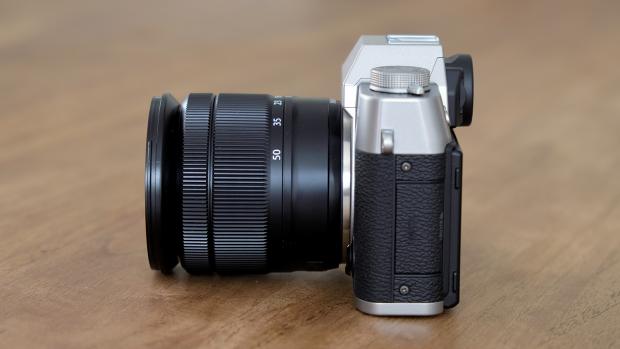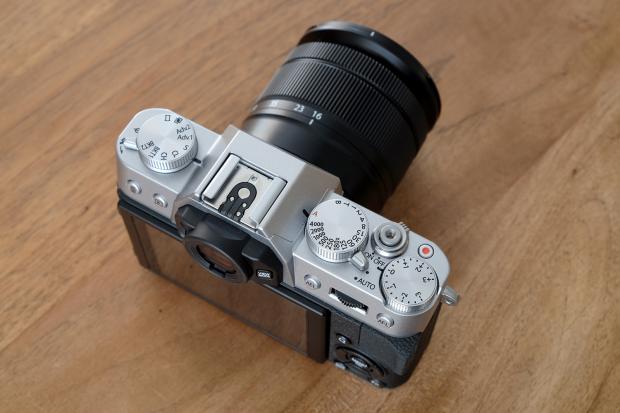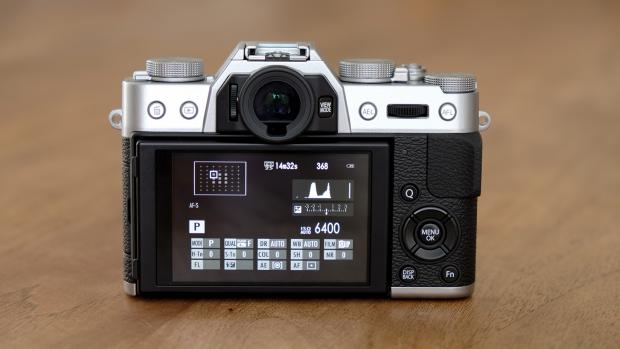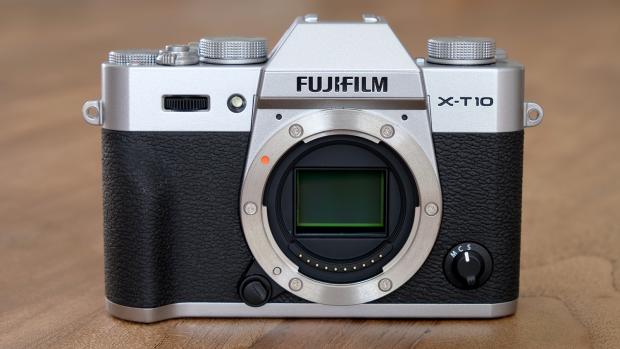Fujifilm X-T10 review
Fujifilm has successfully established its X Mount compact system cameras (CSCs) as a luxury brand. Their retro designs with lots of tactile controls are just the thing to woo keen photographers, and their superb sensors that excel for low noise mean they’re just as impressive on the inside.
The X-T10 is the latest addition, with a name that suggests its close relation to the flagship Fujifilm X-T1. There are numerous similarities, including an SLR-shaped magnesium alloy body, dedicated dials for drive mode, shutter speed and exposure compensation, dual command dials and a tilting LCD screen.
Design and controls
The £495 body-only price is less than half what the X-T1 cost at launch, so clearly something has to give. The X-T10 isn’t weather sealed and its plastic buttons on the back look and feel a little cheap compared to the rest of the package. It dispenses with the X-T1’s dedicated dials for ISO speed and metering mode, and it uses a smaller electronic viewfinder. It’s just as detailed, though, with a 2.4-million-dot resolution, and its 0.62x (35mm equivalent) magnification is hardly under-specified. The 8fps quoted continuous speed matches the X-T1 but there’s only enough buffer memory for 8 JPEGs compared to the X-T1’s 47. There’s no PC sync socket for triggering off-camera flashes, but it does include USB and HDMI, a combined microphone and wired remote socket plus Wi-Fi.
Using the X-T10 is, for the most part, an extremely rewarding experience. The handgrip is a small ridge but the textured rubber finish and contoured thumb grip are a snug fit in the hand. The metal dials on the top plate are satisfyingly chunky and have just the right amount of resistance. I find that having the dedicated shutter speed and exposure compensation dials encourage me to think more creatively about exposure settings.
Many Fujifilm lenses have dedicated aperture rings, but for the 16-50mm kit lens, aperture control is permanently available on the rear command dial. These direct controls mean there’s no need for a mode dial with priority and manual exposure modes. Instead, you just set the shutter speed, aperture, ISO speed or any combination as necessary.
The navigation pad on the back isn’t labelled but its four buttons and an additional Fn button can be assigned to any of 23 options including ISO speed, autofocus area and RAW mode. Alternatively, the four-way pad can be permanently assigned to moving the autofocus area. It’s an effective and versatile system but the lack of labels means there’s a bit of a learning curve. Thankfully, there’s a dedicated switch to put the camera into full Auto mode – perfect for handing it over to friends to take a few snaps.
The menu has a few quirks, such as how enabling face detection in the autofocus options disables metering options. It’s also a bit odd that the drive mode dial includes a multiple exposure option for superimposing two images – not something I ever feel the need to do – while the more useful self-timer function is tucked away in the menu.
Fujifilm’s Wi-Fi implementation is a little clunky. Rather than require a password to connect to an Android or iOS device, the connection must be accepted on both the camera and the connected device. It rarely connected first time in our tests, and on a few occasions both the camera and the app crashed. It’s well featured, though, with touchscreen autofocus, exposure and white balance controls and the ability to record videos remotely. Photo transfers are handled elegantly.
Performance and video
I’m getting used to seeing phenomenal performance from CSCs, and by current standards the X-T10 is merely average. It took 1.6 seconds to switch on and shoot and 0.8 seconds between shots after enabling image reviews after capture. Continuous performance exceeded the quoted speed, coming in at 8.3fps and lasting for 11 frames before slowing to 4.2fps. RAW capture was less impressive, lasting for just seven frames before slowing to 1fps. There’s no live view while shooting in continuous mode – just a display of the last shot – so it’s virtually impossible to track moving subjects.
Fujifilm continues to lag behind its rivals for video capture. The X-T10 records 1080p at a choice of frame rates up to 60fps, but videos are prone to aliasing problems such as pixellation on diagonal lines. The exposure compensation dial works but manual exposure control is unavailable. One welcome change is that autofocus automatically reverts to continuous during recording, regardless of the position of the switch on the front of the camera. However, it can take a long time to lock onto subjects. Overall, the video mode is perfectly adequate for the occasional clip but I wouldn’t recommend it for serious video projects.














